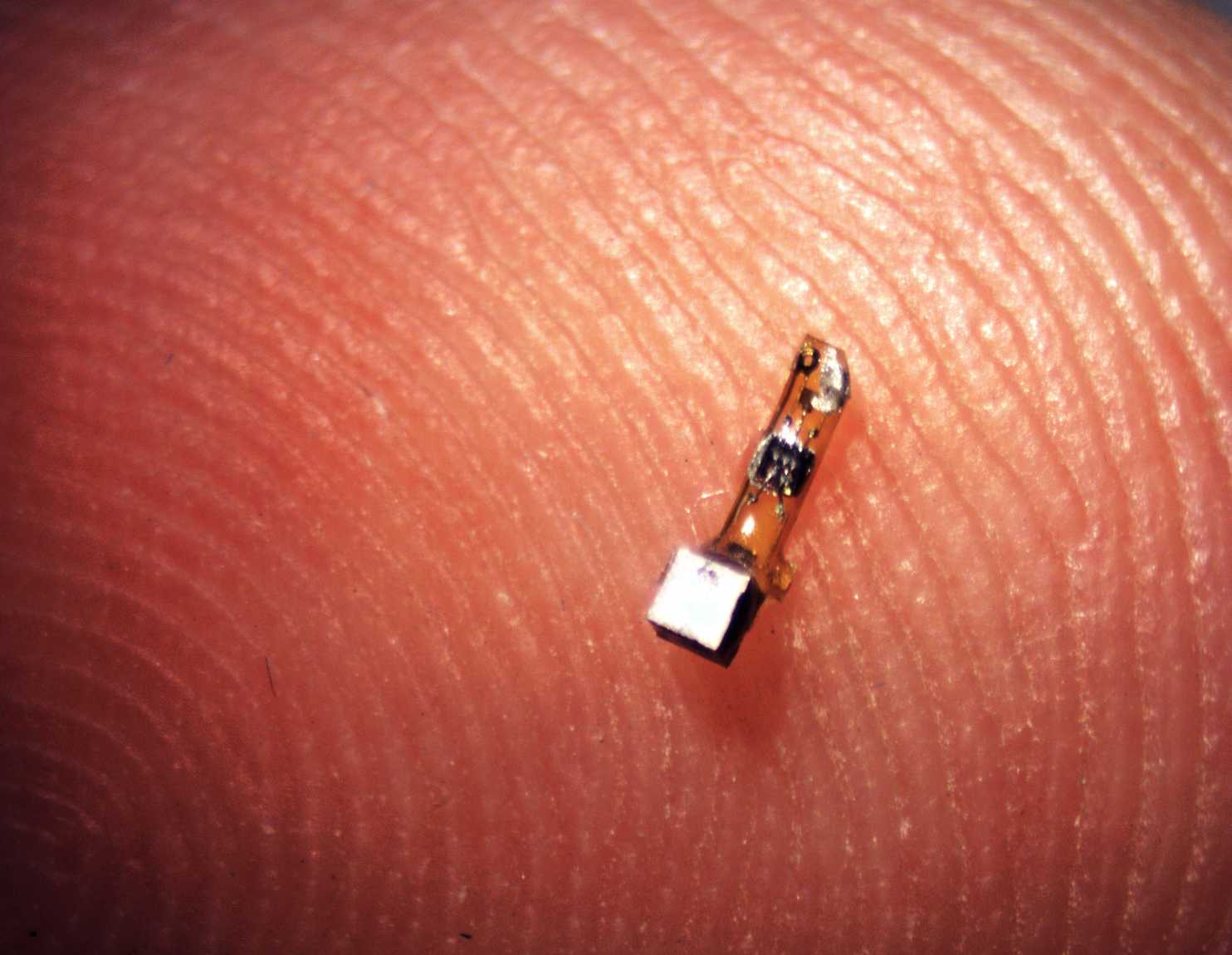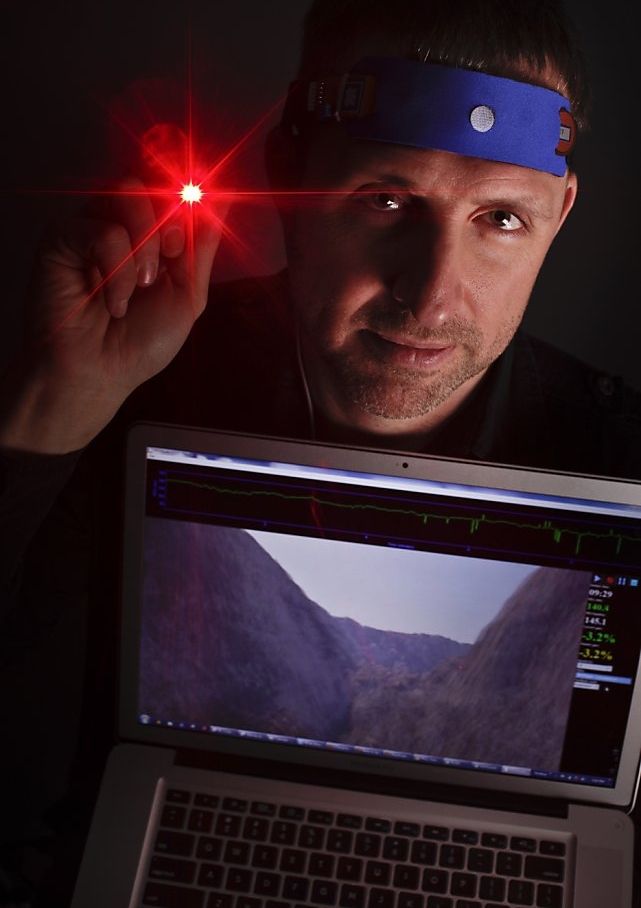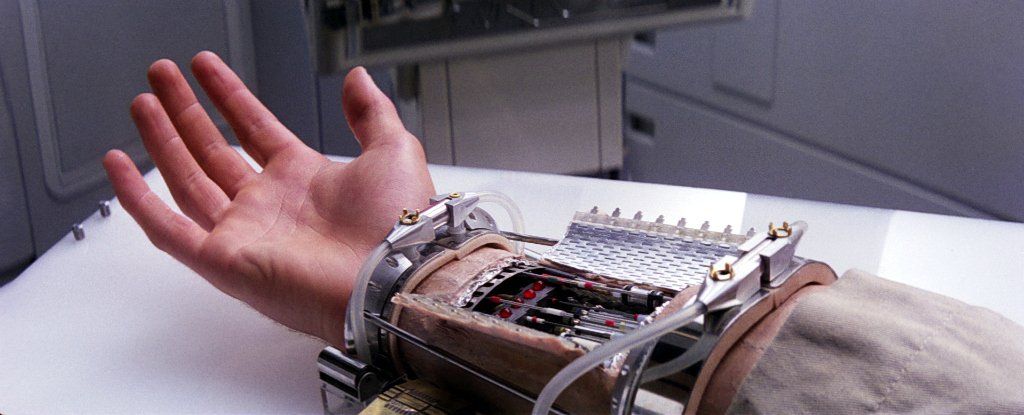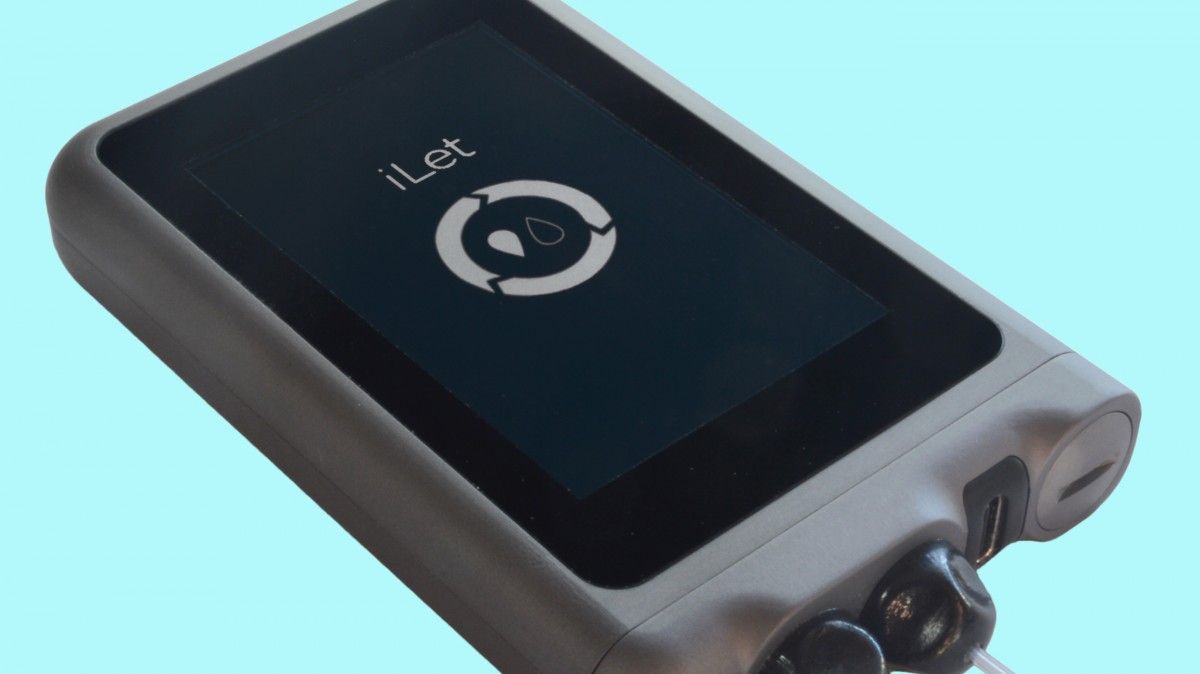Did you know…individual motors in each finger are positioned to optimise weight distribution – making the hand feel lighter and more comfortable.


Open Bionics prosthetic arm.
We’re live with Open Bionics and we’re checking out their insanely cool Deus Ex prosthetic arm.

The benefits of the technology for humans, while still largely hypothetical, are promising. The sensors could allow physicians to monitor the health of organs, create new therapies for neurological disorders, and help the physically impaired to control prosthetics.
While chips have been implanted in humans and other animals before, these sensors mark a significant improvement because they are small, wireless, batteryless, and could last in the body for years without degrading, said Michel Maharbiz, the associate professor who devised and studied the sensors alongside neuroscientist Jose Carmena.
“Hopefully the [tiny sensors] demonstrate a new direction for the field, and then you could build the consensus that’s needed to drive these forward,” Maharbiz said.
It reminds of the medieval knight armor.
Power Armor. A powered exoskeleton with a tough outer shell, coupled with twice the mobility of a normal soldier and the strength of an elephant.
For decades, media has emulated what scientists have been struggling to create for millennia. Armor strong enough to both protect the wearer, and strengthen them through mechanical support.
In recent years, researchers have nearly achieved this kind of technology, with body armor reaching durability tougher than steel, and hobbyists making exoskeletons which can lift hundreds of pounds.

My new OpEd article for the San Francisco Chronicle on chip implants and transhumanism: http://www.sfchronicle.com/opinion/openforum/article/Chip-en…694149.php They also did a 2-minute video of my presidential campaign: http://bit.ly/2aERJxc
The implant can do all sorts of things, like unlock my electronic house door, act as my password on my computer, and even send a text message when people with the right phone and app come near me. Keys, credit cards, ID cards, medical records and passwords — these are all things that can be replaced by a tiny chip in the hand. If having technology in your bodies sounds wacky, consider the millions of people around the world who have artificial hips or dentures, or deaf people who use cochlear implants to hear sounds. […] former Vice President Dick Cheney famously asked to have the Wi-Fi on his heart valve turned off, just in case terrorists tried to hack it. A company in Sylmar (Los Angeles County) called Second Sight already has FDA approval for bionic eyes.

A US Defence Advanced Research Projects Agency (DARPA)-funded prosthetic arm will be released for commercial use beginning in late 2016.
The LUKE arm, one of the world’s most advanced prosthetics, was designed by Segway creator Dean Kamen and has been under development for close to a decade.
The LUKE arm is named after Luke Skywalker’s advanced prosthetic from the Star Wars films, and its banner feature is its control system.


A new story with lots of transhumanism in it:
Zoltan Istvan is in the running for President of the United States. You may not have heard of him, but if elected, he hopes to put an end to death. All of it. (Yes, seriously).
There are people right now walking around with artificial hearts – something that many people believed would not happen for another decade (or even longer). There are quadriplegics no longer bound to a wheelchair, but walk with exoskeleton technology. There are hundreds of thousands of people with brain implants that help them with various ailments. In short, recent technological breakthroughs like these open up the possibility for humans to enhance themselves and their health—and perhaps to even become immortal (someday).
As you can imagine, such radical developments demand strong, intelligent and science-focused political leadership. That is why Zoltan Istvan, of the Transhumanist Party, says that he is running for U.S. President this year, as the #ScienceCandidate.
He thinks that, by encouraging America to embrace science and technology, we could transform our lives and the planet by overcoming poverty, aging, and even death…and all in the coming generation.


Matthew Davis’ Arcus is officially the most impressive thing we’ve ever seen come out of a 3D printer. Sure, cheap prosthetics and replacement body parts are important uses of the technology, but this spinning rubber band blaster is what finally makes us want to put a 3D printer on our desks.
Unlike most rubber band blasters that only fire a single shot every time you squeeze the trigger or require a drive mechanism to make them fully automatic, Davis’ Arcus uses the energy from the loaded elastics to spin the barrel and automatically fire shot after shot until it’s empty. Brilliant.